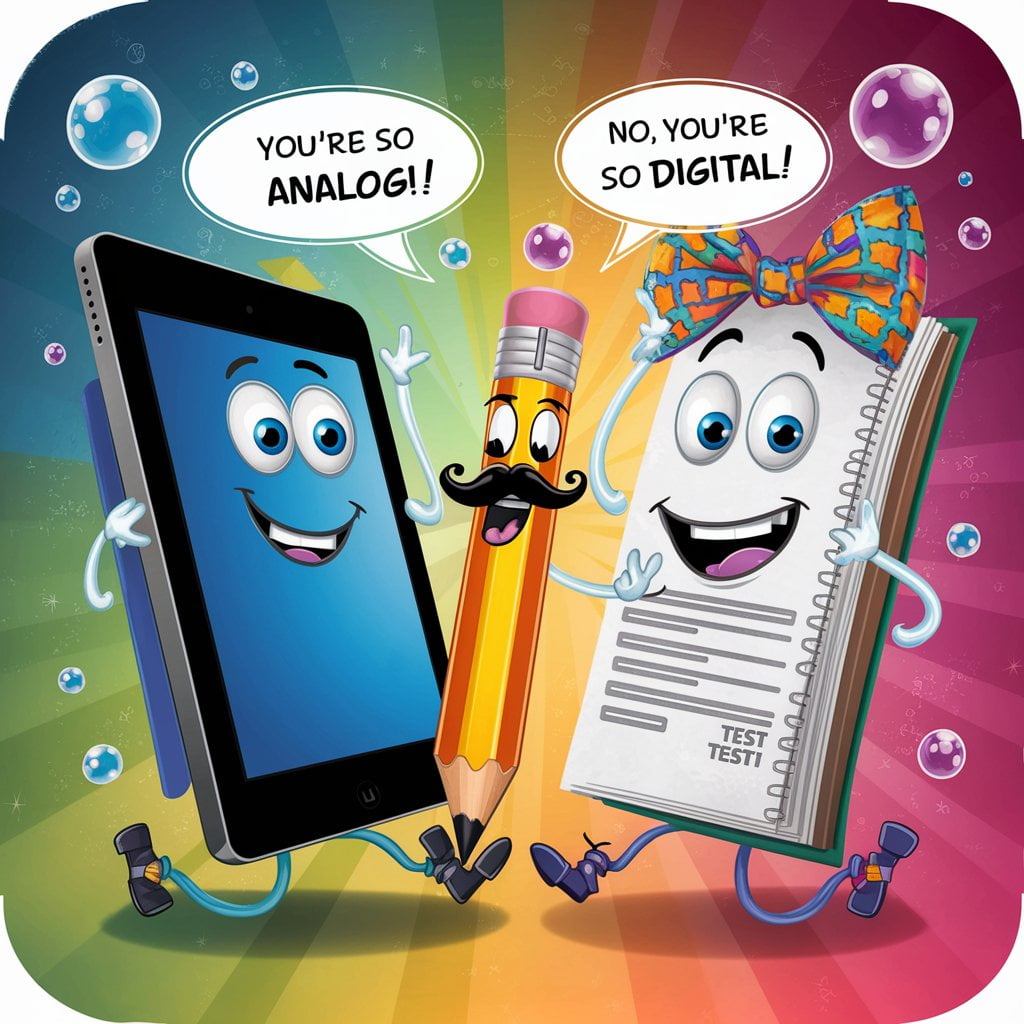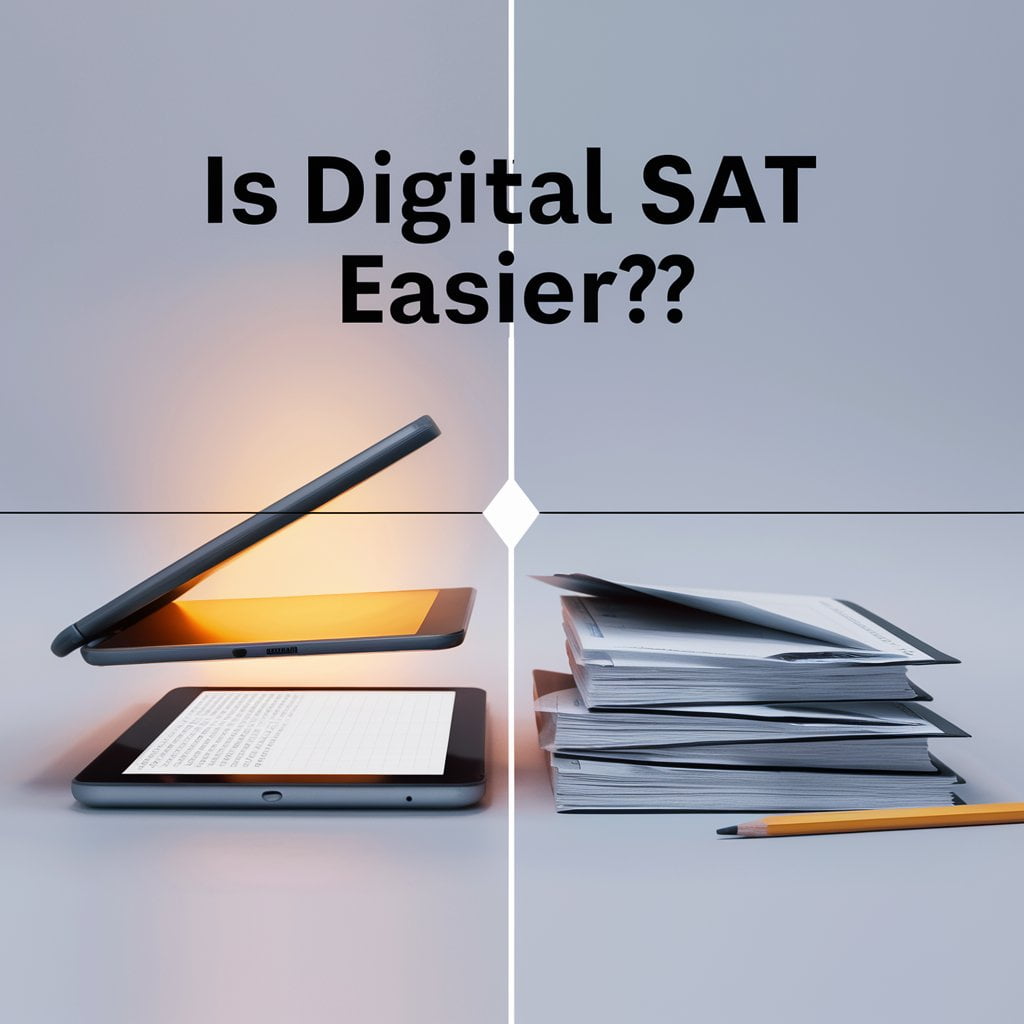Introduction
The SAT has long stood as a pivotal standardized test, shaping the academic futures of countless high school students in the purview of college admissions. Designed to assess a student’s readiness for college, the SAT evaluates skills in reading, writing, and mathematics. Traditionally administered in a pen-and-paper format, this test has undergone significant changes over the years to better align with educational trends and technological advancements. Although SAT is optional in some colleges, here are 6 reasons to take it even if it’s optional!
Emergence of the Digital SAT
In response to the evolving landscape of education and the increasing integration of technology, College Board—the organization responsible for the SAT—introduced the Digital SAT. This transition marks a significant shift in standardized testing, reflecting broader trends in digital education and assessment. The Digital SAT aims to modernize the test-taking experience, making it more accessible and efficient for students.
The New Digital SAT format is administered on computers or tablets, utilizing secure testing software to ensure integrity and fairness. This format change promises several benefits, such as streamlined administration, faster score reporting, and enhanced accessibility features for students with disabilities. Additionally, the digital format allows for innovative question types and interactive elements that were not feasible in the traditional paper-based test.
Differences Between Digital and Pen-and-Paper SAT
| Aspect | Pen-and-Paper SAT | Digital SAT |
|---|---|---|
| Format and Structure | – Printed test booklets and answer sheets – Students use pencils to fill in bubbles and write responses – Strict schedule with fixed time limits for each section | – Administered on computers or tablets – Students interact with the test through a digital interface – Potential for adaptive testing and greater flexibility |
| Interface and Navigation | – Simple navigation by flipping pages – Limited to physical interaction with test booklet and answer sheet | – Interactive interface with mouse or touchscreen – Features like highlighting, digital notes, and question flagging |
| Question Types and Presentation | – Static, linear format – Multiple-choice questions with bubbles – Grid-in questions require writing numbers | – Interactive structure like drag-and-drop, clickable graphics – Passages presented alongside questions – Potential inclusion of multimedia elements |
| Timing and Pacing | – Rigid, uniform timing for all students – Proctors manage timing and announcements – High-pressure environment with constant clock-watching | – Built-in digital timer for each section – Potential for adaptive testing with variable length and difficulty – Aims for more personalized testing experience |
User Experience
Comfort and Familiarity
Pen-and-Paper SAT:
- Comfort: The pen-and-paper format is often seen as more comfortable due to its simplicity. Most students are accustomed to taking exams on paper throughout their schooling, which reduces test-day anxiety. The physical act of marking answers and flipping through pages can provide a tangible sense of progress and control.
- Familiarity: Decades of use in education systems worldwide mean that the pen-and-paper SAT is a known quantity. Students, educators, and test-preparation companies have a well-established understanding of this format, contributing to a high level of comfort and confidence among test-takers.
Digital SAT:
- Comfort: For students who are tech-savvy and accustomed to digital devices, the digital format may feel more modern and engaging. However, those less familiar with digital interfaces might find the transition uncomfortable and stress-inducing.
- Familiarity: As the Digital SAT is relatively new, students and educators are still adapting to its nuances. Initial unfamiliarity can cause anxiety, but as digital literacy increases and more students gain experience with digital exams, comfort levels are expected to rise.
Technical Requirements and Challenges
Pen-and-Paper SAT:
- Technical Requirements: The pen-and-paper SAT requires minimal technical infrastructure. Schools or testing centers need only provide sufficient test booklets, answer sheets, pencils, and a quiet environment.
- Challenges: The primary challenges include logistical issues such as printing and distributing test materials, proctoring large groups, and ensuring the security and integrity of test papers. Test-takers must manage their time manually and cannot rely on digital aids or tools.
Digital SAT:
- Technical Requirements: The Digital SAT necessitates access to computers or tablets, reliable internet connections, and secure testing software. Testing centers must be equipped with the necessary hardware and technical support to ensure a smooth administration. Here’s what you can expect on the test day.
- Challenges: Technical challenges can include device malfunctions, internet connectivity issues, and software glitches. Test-takers may experience difficulties if they are not adept at using digital devices or if their testing environment is not conducive to digital testing. Ensuring all students have equal access to the required technology is also a significant concern.
Accessibility Features
Pen-and-Paper SAT:
- Accessibility: The pen-and-paper format has limited built-in accessibility features. Accommodations for students with disabilities often require separate arrangements, such as providing large-print test booklets, additional time, or having a scribe.
- Limitations: These accommodations can be cumbersome to implement and may not fully meet the needs of all students, particularly those with more complex or varied accessibility requirements.
Digital SAT:
- Accessibility: The digital format offers enhanced accessibility features that can be seamlessly integrated into the test experience. These include screen readers, adjustable text sizes, high-contrast display options, and extended time settings.
- Benefits: These built-in features can provide a more inclusive and supportive testing environment for students with disabilities, making it easier for them to access and complete the test. Additionally, the digital platform can quickly adapt to various needs without the need for separate accommodations.
Pros and Cons
Advantages of the Digital SAT
1. Enhanced Accessibility: The digital SAT includes built-in accessibility features such as screen readers, adjustable text sizes, and high-contrast displays, making it more accommodating for students with disabilities. These features can be quickly and easily adjusted to meet individual needs.
2. Faster Score Reporting: Digital tests can be scored more quickly than paper tests, allowing students to receive their results sooner. This expedited process can be particularly beneficial during tight college application deadlines.
3. Interactive Elements: The digital format allows for more interactive question types, such as drag-and-drop and clickable graphics, which can make the test more engaging and better suited to assessing a range of skills. It also provides access to Desmos – an online graphical calculator. Apparently, this is the easiest way to increase SAT score.
4. Environmentally Friendly: Reducing the need for printed test booklets and answer sheets, the digital SAT is more environmentally friendly. This shift decreases paper consumption and waste associated with traditional testing.
Advantages of the Pen-and-Paper SAT
1. Familiarity: Many students are more comfortable with the pen-and-paper format, having taken numerous paper-based tests throughout their academic careers. This familiarity can reduce test anxiety and improve performance.
2. No Technical Issues: The pen-and-paper format is not susceptible to technical glitches, such as device malfunctions or internet connectivity problems, which can disrupt the testing process and cause additional stress for students.
3. Easier Navigation: Students can easily flip through pages, annotate directly on the test booklet, and physically mark questions to review later. This tactile interaction can be beneficial for test-taking strategies and time management.
4. Equal Access: Pen-and-paper tests do not require access to specific technology, ensuring that all students, regardless of their socio-economic background or geographic location, have an equal opportunity to perform well.
Drawbacks of Digital SAT
1. Technical Requirements: The digital SAT requires reliable access to computers or tablets and stable internet connections. Not all students have equal access to the necessary technology, which can create disparities.
2. Learning Curve: Students unfamiliar with digital interfaces may find the format challenging, potentially impacting their performance. Additional preparation and practice with the digital format are needed to build confidence.
3. Technical Issues: Technical glitches, such as software malfunctions or connectivity problems, can disrupt the testing process and cause significant stress. Testing centers must be well-equipped to handle these issues.
4. Limited Physical Interaction: The lack of physical interaction with the test materials can be a disadvantage for some students. They may miss the ability to annotate directly on the paper, which can be a crucial part of their test-taking strategy.
Drawbacks of Pen-and-Paper SAT
1. Longer Score Reporting: Paper-based tests take longer to process and score, resulting in slower delivery of results. This delay can be problematic for students facing tight application deadlines.
2. Environmental Impact: The production and disposal of paper test booklets and answer sheets contribute to environmental waste. The pen-and-paper format is less sustainable compared to its digital counterpart.
3. Limited Accessibility Features: While accommodations are available, the pen-and-paper format lacks the built-in accessibility features of the digital version. This can make it more challenging to meet the diverse needs of all students effectively.
4. Security Concerns: Physical test materials are more susceptible to security breaches, such as unauthorized access or copying. Ensuring the integrity of the test can be more challenging compared to digital testing environments.

Preparation Strategies
Preparing for the Digital SAT
1. Familiarize with the Digital Interface:
- Practice Tests: Take full-length practice tests on a computer or tablet to become comfortable with the digital format. Use official College Board digital practice tests if available.
- Navigation: Practice navigating through different sections, using tools like highlighting, flagging questions for review, and scrolling through passages.
- Typing Skills: Improve typing speed and accuracy, as the digital SAT may require typed responses for certain sections.
2. Technical Preparedness:
- Device Familiarity: Ensure you are comfortable using the device you will be testing on, whether it’s a laptop, desktop, or tablet.
- Software Proficiency: Familiarize yourself with any specific testing software that will be used. Take note of how to access and use built-in accessibility features if needed.
- Internet Reliability: Ensure a stable internet connection if testing remotely. Practice under similar conditions to mitigate technical issues.
3. Time Management:
- Digital Timer: Use the digital timer during practice tests to get used to pacing yourself. Practice managing your time effectively within each section.
- Adaptive Testing: If the test is adaptive, understand how your performance on early questions may influence the difficulty of subsequent questions. Practice staying calm and focused regardless of question difficulty.
4. Test-Taking Strategies:
- Interactive Questions: Practice with interactive question types like drag-and-drop or clickable graphics to become proficient in answering them.
- Review and Revision: Use the review features to check and revise your answers efficiently
As this is a new format, it is important to refer to the appropriate resources for Digital SAT Practice tests.
Conclusion
Summary of Key Points
Introduction and Overview:
- The SAT is a standardized test widely used for college admissions in the United States and various other countries.
- The emergence of the Digital SAT represents a significant shift in the testing landscape.
- Comparing the digital and pen-and-paper versions helps in understanding their respective impacts on test-takers.
Differences Between Digital and Pen-and-Paper SAT:
- Format and Structure: Digital SATs are administered on computers, offering potential adaptive testing, while pen-and-paper SATs involve physical test booklets.
- Interface and Navigation: Digital SATs provide interactive features and tools, whereas pen-and-paper SATs rely on manual navigation and marking.
- Question Types and Presentation: Digital SATs can include multimedia elements and interactive question types, while pen-and-paper SATs have static, printed questions.
- Timing and Pacing: Digital SATs can offer built-in timers and adaptive pacing, while pen-and-paper SATs have fixed timing managed by proctors.
Performance and Outcomes:
- Test-Taker Performance Comparisons: Initial studies suggest varied performance based on familiarity with digital interfaces.
- Impact on Different Demographics: Digital SATs may pose challenges related to access to technology, potentially affecting lower socio-economic and rural students differently.
- Analysis of Scores and Results: The digital format may lead to faster score reporting and new adaptive testing insights but requires careful analysis to ensure fairness.
User Experience:
- Comfort and Familiarity: Pen-and-paper SATs offer more comfort to those used to traditional testing, while digital SATs require adaptation to new interfaces.
- Technical Requirements and Challenges: Digital SATs necessitate reliable technology, posing potential access issues, while pen-and-paper SATs avoid technical disruptions.
- Accessibility Features: Digital SATs provide enhanced accessibility options, while pen-and-paper SATs have more limited accommodations.
Pros and Cons:
- Advantages of Digital SAT: Enhanced accessibility, faster score reporting, interactive elements, and environmental benefits.
- Advantages of Pen-and-Paper SAT: Familiarity, no technical issues, easier navigation, and equal access.
- Drawbacks of Each Format: Digital SATs face technical challenges and a learning curve, while pen-and-paper SATs have slower score reporting and limited accessibility features.
Preparation Strategies:
- Preparing for the Digital SAT: Focus on digital practice tests, technical proficiency, time management, and interactive question types. You may also take private lessons and prepare with Tutoring Maphy or other reliable websites.
- Adapting Study Habits and Techniques: Consistent practice, targeted improvement, leveraging both digital and traditional resources, and simulating test conditions.
Just like pen and paper format, super-score in SAT is applicable for Digital version as well!
FAQs : Frequently Asked Questions
Q. Is the Digital SAT easier?
The Digital SAT is generally not considered easier than the pen-and-paper version. The new format requires students to adapt to digital tools and interfaces, which can be challenging for those less familiar with technology. The adaptive testing feature can also increase difficulty for high-achieving students by adjusting question difficulty based on performance.
Though the Digital SAT offers enhanced accessibility features and faster scoring, it also introduces potential technical issues like device malfunctions or connectivity problems, which can add stress.
Despite these challenges, the Digital SAT aligns with technological advancements and provides interactive elements that can enhance the testing experience. With proper preparation and familiarity with the digital format, students can manage these challenges effectively.
If you have come this far, go further and know How to score a perfect in SAT Math



